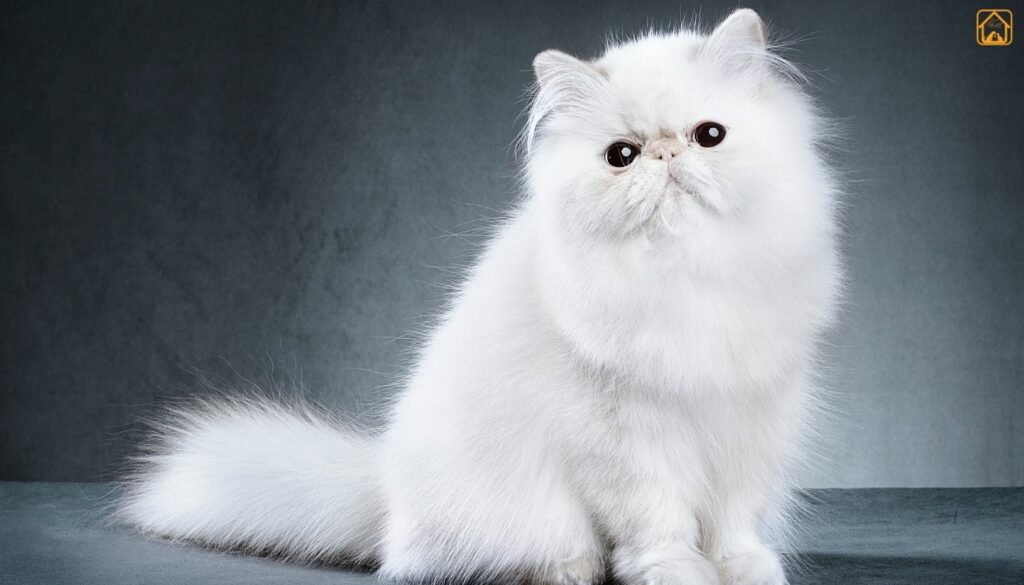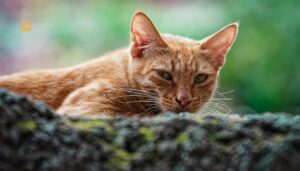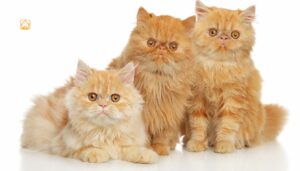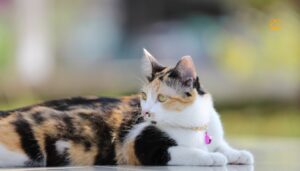Breed Overview and History of the Persian Cat
The Persian cat is one of the oldest and most cherished cat breeds in the world. Their story begins centuries ago, with early records dating back to the 1600s in Persia (modern-day Iran). Traders and world travelers adored these long-haired beauties, and even Queen Victoria kept Persian cats at her side. In 1871, they made a show-stopping debut at London’s first modern cat show, instantly winning hearts.
By the early 1900s, the Persian cat was recognized by cat registries in Europe and the United States. Their luxurious coats, gentle personalities, and captivating presence secured their spot as a favorite among royals and pet lovers alike. Today, Persian cats remain icons of grace and beauty, deeply woven into the tapestry of feline history.
Persian cats haven’t just been show stars and royal pets, they’ve popped up in pop culture, too. From the villain’s lap cat in James Bond films to beloved family companions, these cats have a way of making an impression
Unique Appearance: Facial Types, Eye Colors, and Coat Patterns
Persian Cat Facial Types
Persian cats are famous for their unique faces. You’ll hear about two main types: the “doll face” Persian and the “show face” or “flat-faced” Persian. Doll face Persians have a more traditional, gently rounded nose and less extreme facial features. Show face Persians, on the other hand, have a very flat face, a snub nose, and full cheeks, traits highly prized in cat shows but sometimes linked to breathing issues.
Coat Colors
The Persian cat coat colors are equally stunning, with over 50 recognized colors and patterns. Think solid white, blue, black, red, cream, silver, golden, and chocolate, plus tabby, tortoiseshell, bicolor, and more. The Himalayan Persian, a popular variant, sports color-pointed fur similar to a Siamese.
Body
Persian cats have a medium to large build that feels solid and sturdy. Their legs are short and thick, giving them a low-to-the-ground walk. Don’t be fooled by the fluff, they’re stronger than they look. Under that soft coat is a surprisingly muscular frame.
Eyes
Their big, round eyes are one of their most beautiful features. Colors range from copper and blue to green, hazel, and even one of each. White Persians with blue eyes are especially breathtaking. In person, their gaze is as captivating as it sounds.
Size
Most Persian cats weigh between 7 to 12 pounds, depending on gender and genetics. They usually grow to about 14 to 17 inches long from nose to tail. Their size makes them the perfect lap companion. Not too small, not too big — just right for cuddles.
Other Features
Persians have small, rounded ears that sit wide apart on the head. Their short, fluffy tails often look like little plumes. A broad chest gives them a regal posture. Altogether, it’s a look that screams elegance and comfort at the same time.
Persian Cat Characteristics and Temperament
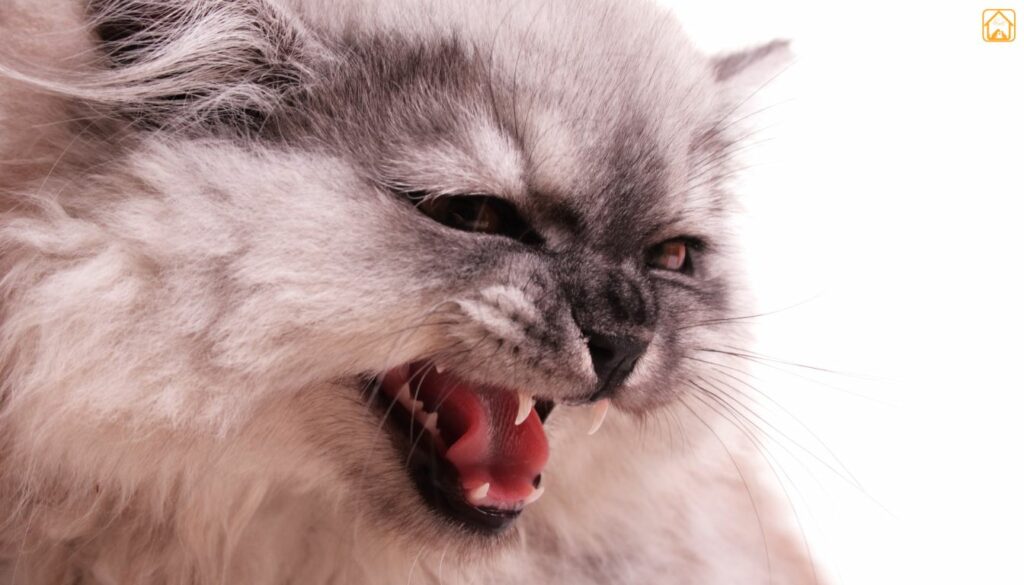
Ask any Persian parent, and you’ll hear stories about gentle snuggles, quiet companionship, and a whole lot of lounging. Persian cats are famously calm and affectionate. They’re not the type to climb curtains or knock over every vase in sight. Instead, you’ll find them curled up on the softest chair, quietly watching the world go by or waiting for a gentle pet.
Persians are known for their sweet, easygoing temperament. They adore their families but don’t demand constant attention, instead, they’re happy just being near you. My own Persian would sit beside me as I read, paw gently resting on my leg, as if to say, “I’m here if you need me.” If you’re looking for a lap cat, the Persian cat is up for the job.
- Affectionate but not clingy: They love cuddles but also enjoy solo time. Persians are good with respectful kids and can get along with other gentle pets.
- Quiet and docile: Persians aren’t big talkers. When they do vocalize, it’s usually a soft, sweet meow or purr.
- Low-energy lifestyle: They prefer lounging, birdwatching, and slow play sessions over wild antics. If you want a calm house, a Persian cat fits right in.
- Sensitive to environment: Sudden changes or loud noises can make Persians anxious. They thrive in peaceful, predictable homes.
Persian Cat Size, Weight, and Lifespan
The Persian cat is a medium to large breed with a sturdy build. Most Persian cats weigh between 7 to 12 pounds, though some can be a bit heavier. Length-wise, they typically measure 14 to 17 inches from nose to tail. Their short legs and deep chests add to their cuddly, teddy bear look.
When it comes to lifespan, Persian cats generally live 12 to 17 years, with some reaching up to 20 years with excellent care. A healthy lifestyle, regular grooming, and prompt veterinary attention can help your Persian enjoy a long, comfortable life.
| Feature | Details |
| Size | Medium to large, solid and cuddly. |
| Weight | 7 to 12 pounds; some can be heavier. |
| Length | 14 to 17 inches from nose to tail. |
| Body Shape | Sturdy frame, short legs, broad chest. |
| Lifespan | Typically 12 to 17 years; some live up to 20. |
Grooming Needs: Shedding, Bathing, and Maintenance Tips
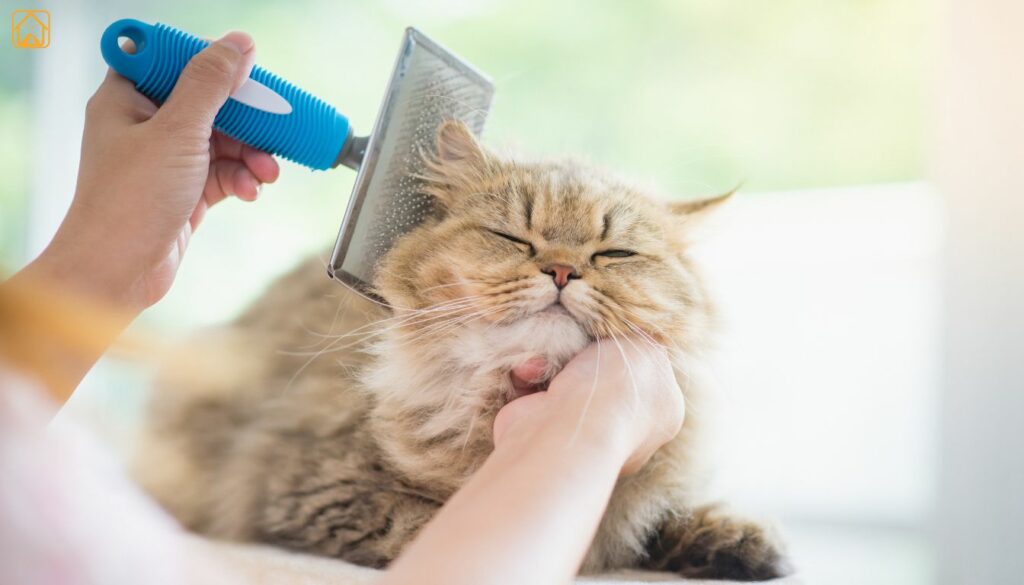
Persian cats are adored for their lush, long coats, but that’s exactly why pet parents need to pay extra attention to their maintenance. Ever tried skipping a day of brushing a white Persian kitten with blue eyes? I did once, and the tangles were a nightmare. Lesson learned.
Daily Brushing
Persian cats shed, a lot. Their thick, double-layered coats easily tangle and mat, especially in high-friction spots like armpits and behind the ears. Use a wide-toothed metal comb first to gently work through the undercoat, then follow up with a slicker brush. This isn’t just about looking good, it keeps your cat comfortable and reduces shedding around your home.
Regular Bathing
Most Persian cats benefit from a bath every 4–6 weeks to keep their coats clean and fluffy. Use a gentle, cat-safe shampoo, and thoroughly dry their fur with a cool pet dryer. I know it sounds dramatic, but a wet Persian really looks like a different animal, tiny body, giant eyes, and a bit of a grumpy face!
Eye Care
Because of their adorable flat faces, Persians tend to have watery eyes. Wipe around their eyes daily with a soft, damp cloth to prevent tear stains and keep infections at bay. This is especially important for punch-face Persians.
Nail and Ear Maintenance
Trim their nails every 1–2 weeks, and check their ears for dirt or wax. Gently clean with a vet-recommended solution if needed. Set up scratching posts and cat trees to keep nails healthy and provide gentle exercise.
| Grooming Task | How Often | Notes |
| Brushing/Combing | Daily | Prevents mats and controls shedding |
| Bathing | Every 4–6 weeks | Use gentle, cat-specific shampoo |
| Eye Cleaning | Daily | Reduces tear stains and discomfort |
| Nail Trimming | 1–2 weeks | Prevents overgrowth and snags |
| Ear Checking | Weekly | Clean as needed |
Do Persian cats shed?
Absolutely. Their long hair means more fur on your clothes, furniture, and sometimes even in your coffee mug. Invest in a good vacuum, lint rollers, and maybe a few extra throws for your couch. Brushing daily cuts down on stray hairs and helps you spot any skin issues early.
Some folks ask if Persian cats are hypoallergenic. They’re not, Persians actually produce the same proteins that cause allergies, and all that hair can carry more dander. If allergies are a concern, spend time with a Persian before bringing one home.
Health Issues in Persian Cat and Preventative Care
Falling in love with a Persian cat means enjoying their cuddles and charm but also staying aware of a few health concerns. Understanding their unique needs helps you give them a long, happy life.
Brachycephalic Airway Syndrome
Those adorable flat faces (especially in punch face Persians) can lead to breathing difficulties, noisy breathing, and heat intolerance. If your Persian ever breathes with an open mouth, it’s a red flag, call your vet right away.
Polycystic Kidney Disease (PKD)
This inherited condition causes cysts on the kidneys, leading to kidney failure over time. Good breeders screen for PKD, so always ask for health certificates. Watch for increased drinking and urination, early signs that need a vet visit.
Eye Issues
Persians’ big, round eyes are prone to excessive tearing, infections, and sometimes progressive retinal atrophy (PRA), which can eventually cause blindness. Daily eye cleaning helps, but see your vet if you notice redness, squinting, or a sudden change in vision.
Dental Disease
Crowded teeth in flat-faced Persians mean more plaque and tartar. Brush their teeth if you can (I know, easier said than done) or ask your vet about regular dental cleanings.
Skin Problems
Their thick coats can hide hotspots, fungal infections, or parasites. Daily grooming helps you spot problems early. If you notice itching, redness, or hair loss, check in with your vet.
| Health Issue | Signs to Watch For | Prevention/Treatment |
| Brachycephalic Airways | Noisy breathing, open-mouth breathing, exercise intolerance | Keep cool, avoid stress, vet checkups |
| PKD | Increased thirst/urination, weight loss | Genetic testing, regular vet screening |
| Eye Disorders | Tearing, redness, cloudiness | Daily cleaning, prompt vet care |
| Dental Issues | Bad breath, drooling, not eating | Brushing, dental cleanings |
| Obesity | Weight gain, lethargy | Controlled feeding, playtime |
Routine veterinary checkups, a balanced diet, and early detection is key. If you notice changes in appetite, weight, or behavior, don’t wait to call your vet.
Feeding Requirements and Dietary Recommendations
Persian cats need a complete, balanced diet tailored to their age (kitten, adult, senior), weight, and activity level. Because they’re not the most active cats, it’s easy for them to pack on extra pounds. Persians sometimes struggle to pick up food, many brands offer Persian-specific kibble shapes that are easier for flat faces to grasp.
Key nutrition tips for Persian cats:
- Feed measured portions, no free-feeding. Persians aren’t known for their athleticism, and they can easily gain weight. Obesity puts extra strain on their joints and can worsen breathing and heart issues.
- Choose foods rich in high-quality protein and moderate fat. Omega fatty acids (like those from fish oil) help keep their skin and coat healthy, which is a must for long-haired cats.
- Consider hairball control formulas. Persians ingest a lot of fur when they groom themselves, so foods with added fiber can help move hair through the digestive tract. Less hacking, less mess, everyone wins.
- Keep water fresh and plentiful. Some Persians love drinking from fountains. Hydration is especially important for kidney health.
| Life Stage | Feeding Frequency | Notes |
| Kitten | 3 times daily | High-protein, kitten-formulated food |
| Adult | 2 times daily | Portion-controlled, hairball support |
| Senior | 2 times daily | Consider joint support & kidney health |
Some Persians have food sensitivities or allergies, if you notice chronic skin or digestive problems, talk to your vet about a limited-ingredient or prescription diet. And for those with a “punch face” and dental crowding, softer foods might be easier to eat.
Exercise, Environment, and Indoor Care for Persian Cats
Persian cats are homebodies at heart. They thrive indoors where it’s safe and calm, away from hazards and harsh weather. While they aren’t athletes, they enjoy gentle play sessions with feather wands or rolling balls. Short bursts of activity help keep them healthy and prevent obesity.
Offer cozy beds, cat trees, and sunny windowsills for lounging and birdwatching. Provide scratching posts for healthy claws. Persians like predictable routines and quiet spaces, sudden changes or loud environments can stress them out.
Variants: Doll Face vs. Show Face, Himalayan Persian & Other Types
The Persian cat breed has several recognized variants. Doll face Persians have a more natural look, while show face Persians have the extreme flat profile. The Himalayan Persian is a striking variant, combining Persian features with Siamese-like color points on the face, ears, paws, and tail. Other types, such as the Chinchilla Persian, are prized for their shimmering silver coats.
When choosing a Persian, consider which facial type and coat pattern fits your lifestyle and preferences. Each variant is beautiful in its own way, but grooming and health needs can vary.
Choosing, Adopting, and Veterinary Care for Persian Cats
Start by finding a reputable breeder or rescue. Ensure kittens or adults are health-tested, especially for PKD and eye issues. Adoption is a wonderful option, many Persian cats need loving homes through breed-specific rescues.
Before bringing your Persian home, prepare a quiet, safe space with cozy bedding, food and water bowls, a litter box, and grooming supplies. Schedule a veterinary checkup for vaccinations, microchipping, and an overall health assessment. Regular vet visits and preventive care, like dental cleanings and parasite checks, are essential for a long, happy life together.
FAQs About Persian Cats
What makes the Persian cat unique compared to other breeds?
Persian cats stand out for their luxurious coat, flat or rounded faces, and calm, loving temperament. They need extra grooming, but their gentle personalities make them wonderful indoor companions.
Are Persian cats good with children and other pets?
Yes, as long as kids are gentle and other pets are calm. Persians dislike rough play or loud environments and prefer a peaceful home.
How often should I groom my Persian cat?
Daily brushing is best to prevent mats and reduce shedding. Regular baths, nail trims, and facial cleaning are also important for their health and comfort.
Do Persian cats have many health problems?
They can be prone to genetic conditions like PKD, breathing and eye issues, and dental disease. Choosing a responsible breeder and keeping up with veterinary care helps reduce risks.
What is the difference between doll face and show face Persians?
Doll face Persians have a traditional, gently rounded face, while show face Persians have a flatter, more extreme profile. The latter may have more respiratory and dental challenges.
How long do Persian cats live?
With good care, Persian cats typically live 12 to 17 years, though some reach 20. Regular vet visits, proper diet, and daily grooming support longevity.
What should I feed my Persian cat?
High-quality cat food with balanced protein, fat, and fiber, tailored to your cat’s age and weight. Avoid overfeeding, and consult your vet for specific recommendations.
